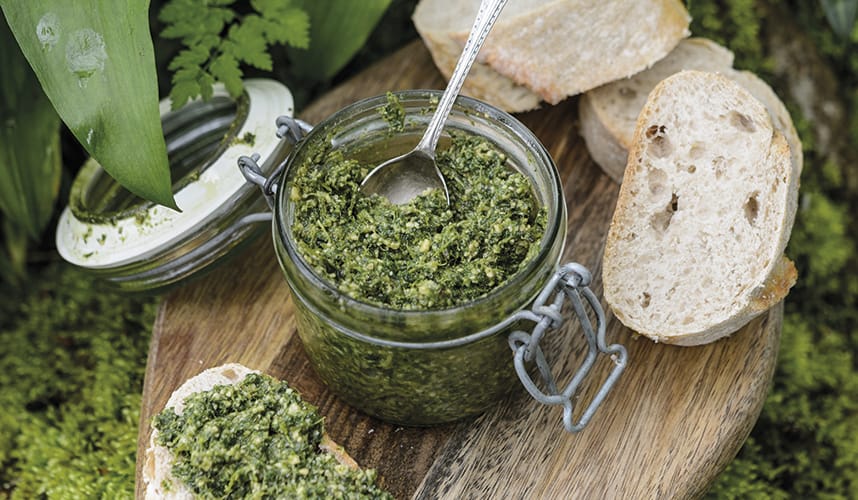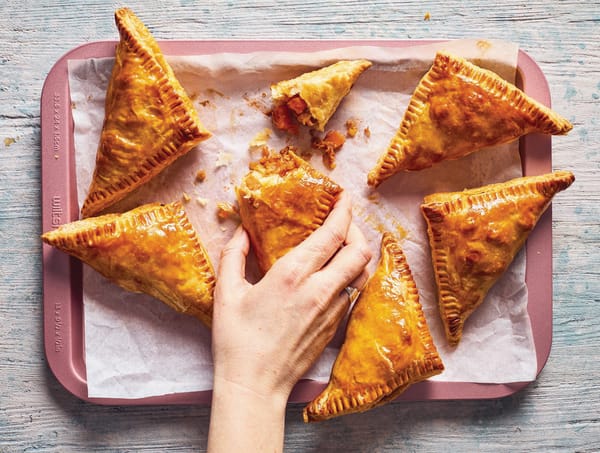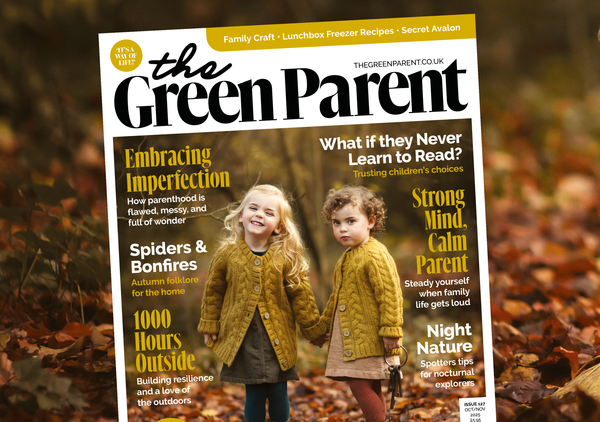David Hamilton offers his favourite recipes for gathering and eating wild plants. Here he shares his favourite nettle pesto recipe to make the most of the bountiful greens in the hedgerow right now
Like many others, my experience of wild foods began when I was very young. I grew up quite far from the wild in a large town. I craved the outdoors, and along with my brother and sister we would find wild places among our otherwise urban surroundings: we picked elderberries for jams and nettles for soup from the bottom of our garden, we ate beech nuts from the large beech tree in the corner of our school playground and on family days out we all picked blackberries together. The blackberries were picked with pies and jams in mind but they seldom made it home, as we munched away, staining our fingers and tops with the delicious juice.
The older I got, the more fascinated I became with plants, and my knowledge grew. Once you get the foraging bug there is no turning back. As soon as the summer holidays end you’ll be asking yourself, where can I find chestnuts to roast, hazelnuts to crack or where are the best wild apple trees? During cold winter days you’ll be searching the coast for overwintering sea beet leaves. Spring will be met with a new found anticipation for the first shoots of wild garlic or fresh early nettles waking up from their winter slumber. Then, as summer finally comes around again, you’ll want to spend as much time as you can outside, hunting for the sweet taste of summer berries.
From Darwin to David Attenborough, many naturalists built their careers on a fascination with nature, which began in early childhood. However, in this digital age our children can all too easily become isolated from meaningful contact with both the natural world and the adults around them. Foraging for wild food can help alleviate this: a day gathering blackberries can be a great way to reconnect as a family and with the great outdoors.
NETTLES - HOW TO EAT
The first thing you need to do with nettles is sort out those pesky stinging hairs by either drying out the nettles thoroughly or blanching them in hot water. The hairs don’t disappear, but they droop and are no longer capable of piercing the skin, delivering their painful mix of chemicals. Always wear thick gardening gloves when picking or handling nettles. The sting will hurt at first and can itch for hours afterwards.
Dried or fresh nettles can be steeped in boiling water and drunk as a tea. Cooked nettle has a lovely, almost nutty flavour and can be used as a replacement for spinach. It goes well with butter, cream cheese, nutmeg, olive oil or lemon juice. It also makes a rather nice soup when mixed with leek and potato.
Garlicky nettle pesto
INGREDIENTS
- a colander full of nettles (use tongs or gardening gloves to handle the nettles)
- 100 g cashew nuts
- a large (adult) handful of wild garlic leaves
- 50 g grated Parmesan cheese
- 1 teaspoon lemon juice
- 2–3 pinches of salt
- 2 tablespoons olive oil (you may need to add a little more)
METHOD
- Wearing gloves, wash the nettles carefully in a colander.
- Bring a pan of water to the boil over a low heat and simmer the nettles for 2–3 minutes, ensuring all the nettles are submerged.
- Drain the liquid – this makes a rather nice tea!
- Dry the nettles off in a salad spinner or place in a tea towel and squeeze the liquid into a sink. You should end up with two adult-sized handfuls of nettle leaves.
- Grind the cashew nuts to a fine powder in a clean coffee grinder, seed grinder or pestle and mortar. If you don’t have any of these, try placing them in a sealed bag and bashing them with a rolling pin.
- Put all the ingredients into a blender and whizz them for a count of 5, adding a little more oil if required. If not fully blended, whizz for another count of 5 or until it is a smooth paste. Serve with pasta.
NOTES
Only use young plants or the top 5–8 cm of older plants. The larger leaves of older plants contain calcium carbonate, which can taste gritty and be quite bad for you if eaten in large amounts.
MORE INSPIRATION
READ Family Foraging by David Hamilton, photography by Jason Ingram (White Lion Publishing)







